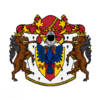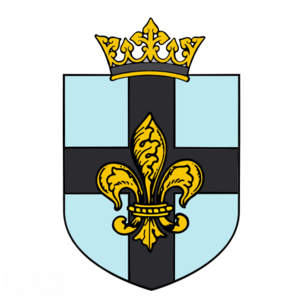Saxbury
This article is incomplete because it is pending further input from participants, or it is a work-in-progress by one author. Please comment on this article's talk page to share your input, comments and questions. Note: To contribute to this article, you may need to seek help from the author(s) of this page. |
Duchy of Saxbury Δουκάτο του Σάξμπουρυ Saxbury | |
|---|---|
| Motto: "Υπερηφάνεια, Δικαιοσύνη, Δύναμη" "Pride, Justice, Power" | |
| Anthem: Αιώνιος Ύμνος | |
| Capital | πόλη του Σάξεντ |
| Largest city | Νέο Ineichell |
| Official languages | |
| Demonym(s) | Saxburgish |
| Government | Federal absolute monarchy |
| Dietmar Luther IX | |
| Berthold Forst, Duke of Saxbury | |
| Philomache Dorotheus, Lieutenant Duchess of Saxbury | |
| Independance from Berush | |
| 7 August 34 | |
| 1 July 1738 | |
| Area | |
• Total | 192,374 km2 (74,276 sq mi) |
• Water (%) | 3.7 |
• Land area | 2,486,826.17 km2 (960,168.95 sq mi) |
| Population | |
• 2058 estimate | |
• Census | |
• Density | 39/km2 (101.0/sq mi) |
| GDP (PPP) | 2058 estimate |
• Total | 638.7 billion (32nd) |
• Per capita | 37,051 (46th) |
| GDP (nominal) | 2058 estimate |
• Total | 673.2 billion (18th) |
• Per capita | 39,051 |
| HDI (2058) | very high |
| Currency | Saxburgish Ber (SBB) |
| Time zone | UTC-7 (Saxburgish Time) |
| Date format | dd/mm/yyyy |
| Driving side | left |
| Calling code | 111 |
| Part of a series on |
| the Saxenders |
|---|
 |
Saxbury, officially the Duchy of Saxbury, is a Berushian duchy in northern Foclaininth. It is a megadiverse country, home to numerous mountains, valleys, deserts, rainforests, and deserts. It has a low population, with a total amount of denizens of 17,238,923, as of 2058. Saxbury's capital is πόλη του Σάξεντ, while the largest is Νeο Ineichell.
Indigenous peoples have continuously inhabited what is now Saxbury for thousands of years; the most prominent were the Saxenders. They settled the area, and formed over twenty distinct cultures by the time of Berushian settlement of the area. The Berushians named the colony after the natives; the new land was named Saxenderburg. As a consequence of various armed conflicts, South Ledonia ceded all territory in the area to Berush in 31. The nation was formally admitted to the Holy Realms on 7 August 34, the second nation to have been admitted, besides Berush itself.
Etymology
The name Saxbury finds etymological roots in the name of the most prominent tribe in the area, the Saxenders. 1st century Berushian explorers named it Saxenderburg, after the tribe. Several maps of the time used the name to depict the area, but not the settlements themselves.

